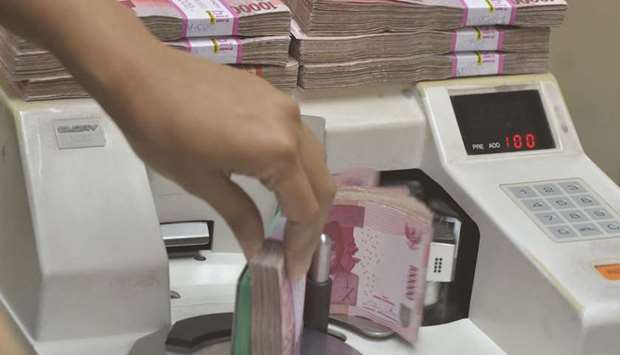The Indonesian rupiah tumbled to within a whisker of its 1998 record low recently before a relief rally. Options markets indicate the respite will be brief.
Options are pricing in close to 80% chance that the currency will drop past the low of 16,950 per dollar within three months. Rabobank sees the rupiah falling to 17,922 per dollar in the second quarter.
The bets on the rupiah, often seen as a benchmark for risk appetite, suggest that it’s far from reaching a bottom and the rout for emerging-market assets will run longer as the world struggles to contain the coronavirus pandemic. Even with a cheaper dollar and yen, popular carry trades may continue to unwind.
“I don’t think the tide has turned yet at all and I still believe there is more pain to come for rupiah, despite the US stimulus,” said Raphie Hayat, a senior economist at Rabobank. “Dollar liquidity is not necessarily finding its way to emerging markets, the demand for dollar will likely remain strong,” he said.
The rupiah plunged 15% this quarter, poised for its worst performance since September 1999. It dropped for the second straight day yesterday as the nation prepared to lockdown its capital to curb the coronavirus spread. The currency gained about 2.5% in the previous three sessions on the Federal Reserve’s unlimited bond buying pledge and the US stimulus package.
Bank Indonesia has used a raft of measures to slow the currency’s descent, buying 168.2tn rupiah of bonds, and intervening in the spot currency and forwards markets. On March 26, Governor Perry Warjiyo said the pressure is easing as foreign outflows slow.
Global funds have sold $8.3bn of the nation’s sovereign debt as of March 27, the most quarterly sales since Bloomberg began tracking data in 2009. Their holdings have dropped from a high of 39% in January to 33% as of March 26.
That’s made Indonesian bonds the worst performers this month after South Africa among 47 sovereign markets tracked by Bloomberg. The Asian nation’s debt has lost 5.5% since the end of February, while US Treasuries gained 2.8%.
“Intervention measures help smooth out the volatility, but to stop the outflow we need to see a broad-based stabilisation in market sentiment,” said Winson Phoon, head of fixed-income research at Maybank Kim Eng Securities in Singapore.
A continued slide in the rupiah and outflows will weigh on the nation’s current-account deficit, which widened to 2.84% of GDP in the fourth quarter of 2019, the worst in Asia. The central bank’s foreign reserves fell in February to $130.44bn.
With Finance Minister Mulyani Indrawati projecting a worst-case scenario of zero economic growth if the pandemic lasts for another three to six months, the pressure on the rupiah could keep mounting.
“EM currencies will continue to be hostage to swings in sentiment,” said Nicholas Mapa, a senior economist at ING in Manila. “We’re not out of the woods until we see economies back to work and when social distancing is no longer the norm”.

An employee counts Indonesian rupiah banknotes at a money changer’s office in Jakarta. The rupiah tumbled to within a whisker of its 1998 record low recently before a relief rally. Options markets indicate the respite will be brief.


